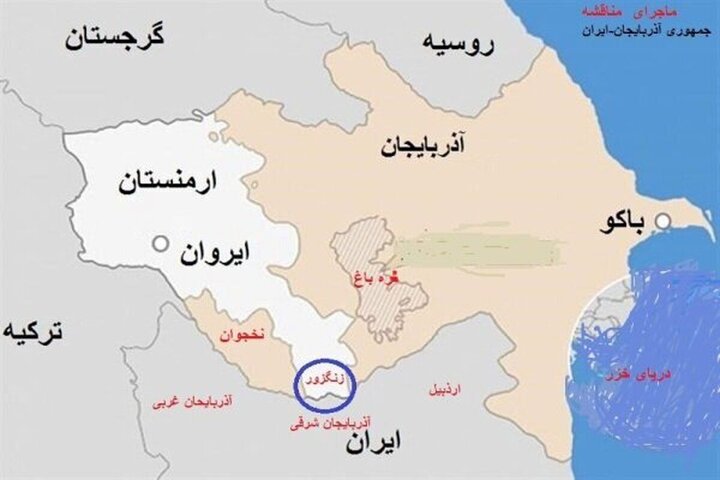Meghr News Agency, International Desk: The Zangazur corridor, designed to connect Azerbaijan to Nakhchivan via Armenia’s Syunik province, initially appears as a transit project. However, its implications extend far beyond transportation. This route has the potential to shift the geopolitical balance in the South Caucasus, transform the regional economy, and even influence security and cultural dynamics. For Iran,which regards the Caucasus as vital to its national security domain,the key question is: how should it respond? The answer lies in a proactive strategy-one that goes beyond mere opposition and offers initiatives and alternative proposals.
From Baku’s and Ankara’s perspective, Zangazur completes connectivity among Turkic-speaking countries; for Washington, it represents an opportunity to limit Russian and iranian influence in the Caucasus. Iran considers this corridor a red line because it could open its northwest borders to foreign forces. Although recent agreements insist that control remains with Armenia, concerns persist over American companies’ involvement. In this context,Iran must act as an active player rather than a passive opponent.
Economy: threats and Opportunities
Estimates indicate new corridors could reduce Asia-Europe transit times by up to two weeks and add billions of dollars in regional trade value. While such prospects are attractive for Azerbaijan and Armenia, Iran faces risks of losing transit share-some analysts suggest declines between 20% and 30%. To counter these challenges,iran has several crucial options:
1. Completing the North-South Transport Corridor (INSTC) with Russia and India connects Bandar Abbas port directly to Europe while halving India-Europe transit time.
2. Implementing the Aras corridor across Iranian territory linking Nakhchivan with Baku-a plan satisfying Azerbaijan’s needs while reinforcing Iran’s position.
3. Reviving the Persian Gulf-Black Sea project with Armenia and Georgia will create a direct iranian route into Europe.
Security: Tehran’s Red Lines
Iran has made clear it rejects any border changes or foreign military presence in the Caucasus region. Military drills by both Army and IRGC units in northwest Iran affirm that this stance is not merely diplomatic rhetoric. Although immediate risks of conflict have lessened recently, allowing American companies management roles over these corridors may enable expanded intelligence operations or indirect NATO/israeli military presence nearby. Under such circumstances, Tehran’s policy should focus on ensuring these routes remain strictly civilian-economic corridors free from militarization.
Culture & Identity: Iran’s Soft Power Asset
The Caucasus is not only neighboring territory but part of shared historical-cultural heritage for Iran. Religious ties with Azerbaijan combined with long-standing relations with Armenia serve as foundations for building trust toward Tehran influence efforts aimed at boosting tourism development, scientific exchanges,and active media engagement can strengthen iranian soft power-a form of influence no physical corridor can undermine or erase.
for these reasons,Iran must pursue positive measures instead ofinflexible opposition:
- Pursue parallel alternative routes: expedite completion of North-South Corridor,relaunch Aras corridor,and revive Persian Gulf-Black Sea connection projects;
- Pursue multilateral diplomacy actively:Create forums like Format 3+3to guaranteeregional managementand preventforeign monopolization;
- Pursue regional security agreements:Iran may propose pacts whereby South Caucasian states commit tomaintaining transits solelyeconomicwithout hostingforeign bases;
- Diversify bilateral economic ties:aim togrowtradewithArmeniaabove $1 billionand launchjoint energy-industrial projects;
The Zangazur corridor is both threatand opportunityforIran.Ifpassive,Iranriskslosing significantgeopoliticalandeconomicroles.Butwithinitiative – combining diplomacy,infrastructuredevelopment,securitated deterrence,andsoft power - Tehrancan turnthis challengeinto an opportunityto reinforceits historic standing intheCaucasus.
In other words,Iranisnot againstpeaceordevelopmentinthisregion,but objectsbeing excludedfromit.The future reliesonTehran successfullybalancingsecurity redlineswhile assertingaconstructiveroleinthe process.
Hossein Shahpari; Political analyst

دیدگاهتان را بنویسید